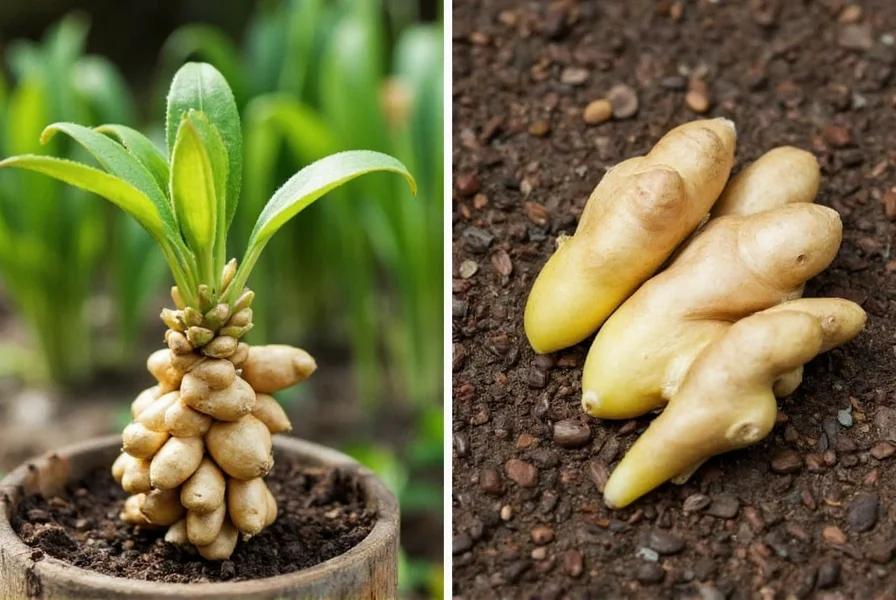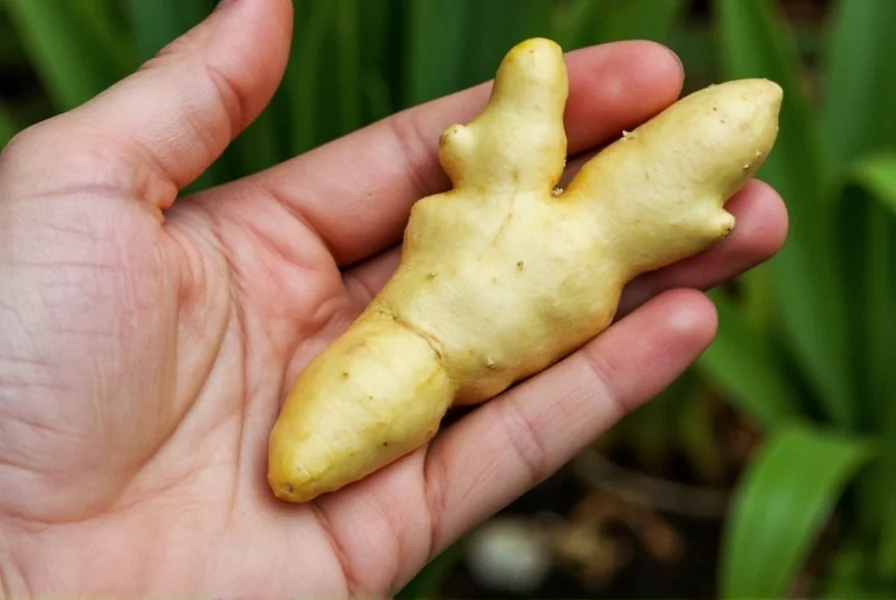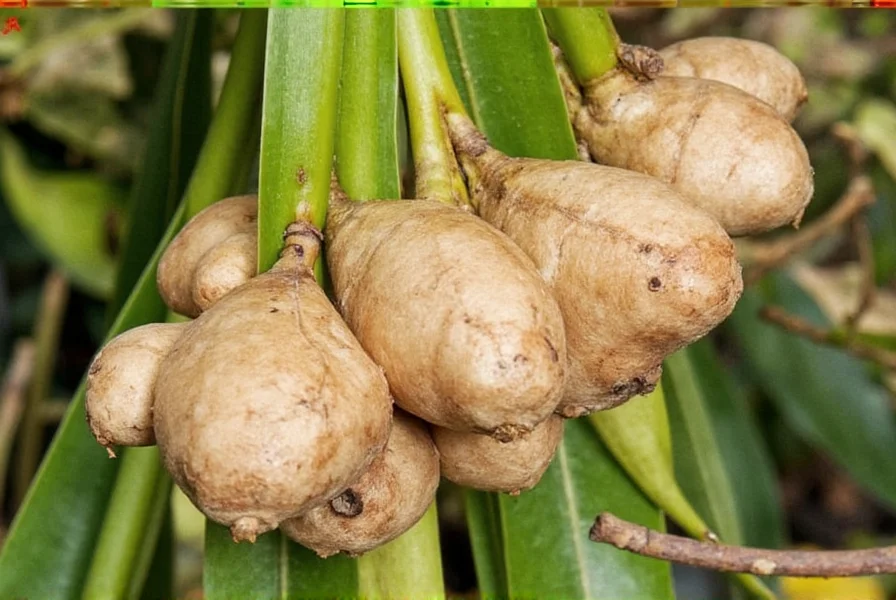Growing your own ginger offers fresh, organic spice right from your garden or container. This tropical perennial, Zingiber officinale, produces flavorful rhizomes that serve as both culinary spice and medicinal herb. Unlike many garden plants, ginger grows horizontally beneath the soil rather than upward, making its cultivation process unique.
Choosing Quality Ginger Rhizomes for Planting
Select plump, firm ginger roots with multiple growth buds or 'eyes' visible along the surface. Organic grocery store ginger works best since conventionally grown ginger often receives growth inhibitors. Look for roots with a smooth, shiny appearance without wrinkles or soft spots. Each planting section should contain at least one healthy bud and measure 1-2 inches in length.

Optimal Timing for Ginger Planting
Plant ginger root in early spring after the last frost when soil temperatures reach at least 70°F (21°C). In tropical climates, plant at the beginning of the rainy season. For container growing, you can start ginger indoors year-round, though spring planting aligns best with natural growth cycles. Remember that ginger requires 8-10 months of warm weather to reach full maturity.
Soil Preparation Essentials
Ginger thrives in rich, loamy soil with excellent drainage and a slightly acidic pH between 5.5 and 6.5. Create an ideal planting medium by mixing equal parts garden soil, compost, and perlite or sand. Avoid heavy clay soils that retain too much moisture, as ginger rhizomes will rot in waterlogged conditions. Raised beds work exceptionally well for ginger cultivation in areas with heavy rainfall.
| Soil Component | Percentage | Purpose |
|---|---|---|
| Garden soil | 40% | Provides structure and mineral content |
| Compost | 40% | Supplies nutrients and improves moisture retention |
| Perlite or sand | 20% | Ensures proper drainage to prevent rhizome rot |
Step-by-Step Ginger Planting Process
Follow these steps for successful ginger root planting:
- Soak ginger rhizomes in water for 1-2 hours to stimulate growth
- Break or cut rhizomes into sections with at least one bud per piece
- Fill containers or garden beds with prepared soil mix
- Place rhizome sections with buds facing upward
- Cover with 2-4 inches of soil (deeper in hotter climates)
- Water thoroughly but avoid creating soggy conditions
- Maintain consistent soil moisture during sprouting
Ginger Plant Care Requirements
Ginger needs partial shade, especially in hotter climates, with 2-5 hours of morning sun being ideal. Water regularly to keep soil consistently moist but never waterlogged. During active growth (spring through summer), apply a balanced organic fertilizer every 4-6 weeks. Mulch around plants to maintain soil moisture and temperature. In cooler climates, bring container-grown ginger indoors before temperatures drop below 50°F (10°C).
Harvesting Your Homegrown Ginger
You can harvest ginger at different stages:
- Young ginger: After 4-6 months for tender, mild-flavored rhizomes
- Mature ginger: After 8-10 months for full flavor development
- Storage harvest: When leaves yellow and die back naturally
To harvest, carefully dig around the edges of the plant and lift the entire rhizome cluster. Leave some smaller sections in the ground if you want the plant to continue growing. After harvesting, cure ginger by air-drying for 2-3 days before storing in a cool, dark place.
Troubleshooting Common Ginger Growing Problems
Yellowing leaves often indicate overwatering or poor drainage. If your ginger shows slow growth, it may need more nutrients or warmer temperatures. Rotting rhizomes typically result from waterlogged soil. Watch for spider mites in dry conditions and apply neem oil if needed. In cooler climates, ginger may go dormant when temperatures drop below 60°F (15°C), but will resume growth when conditions improve.
Extending Your Ginger Harvest
For continuous harvest, practice 'hand harvesting' by carefully removing only portions of the rhizome cluster while leaving the plant intact. This technique allows you to enjoy fresh ginger throughout the growing season without ending production. Simply dig gently around the outer edges of the plant, remove a few rhizome sections, then cover the remaining plant and water lightly.

Frequently Asked Questions
Can I plant grocery store ginger root?
Yes, but organic grocery store ginger works best because conventional ginger often contains growth inhibitors. Look for plump roots with visible growth buds, soak them before planting, and ensure they're disease-free for the best results when growing ginger from store-bought roots.
How deep should I plant ginger root?
Plant ginger root sections 2-4 inches deep with the growth buds facing upward. In hotter climates, plant deeper (4 inches) to protect from excessive heat, while in cooler areas, shallower planting (2 inches) helps the soil warm faster. Always cover the rhizome completely with soil.
How long does it take for ginger to grow from root?
Ginger typically sprouts within 2-3 weeks after planting under optimal conditions. However, it requires 8-10 months of warm weather to reach full maturity. You can harvest young ginger after 4-6 months, but the flavor develops fully after the complete growing season.
Can I grow ginger indoors year-round?
Yes, ginger grows well indoors in containers when provided with warm temperatures (70-90°F), high humidity, and indirect light. Use a container at least 12 inches deep with drainage holes, and maintain consistent soil moisture. Indoor ginger may grow more slowly but will produce usable rhizomes after 8-10 months.
Why are my ginger plant leaves turning yellow?
Yellowing ginger leaves usually indicate overwatering or poor drainage. Check soil moisture and reduce watering if the soil feels soggy. Yellow leaves can also signal nutrient deficiency, particularly nitrogen. Apply a balanced organic fertilizer and ensure your ginger receives appropriate light conditions (partial shade with morning sun).











 浙公网安备
33010002000092号
浙公网安备
33010002000092号 浙B2-20120091-4
浙B2-20120091-4